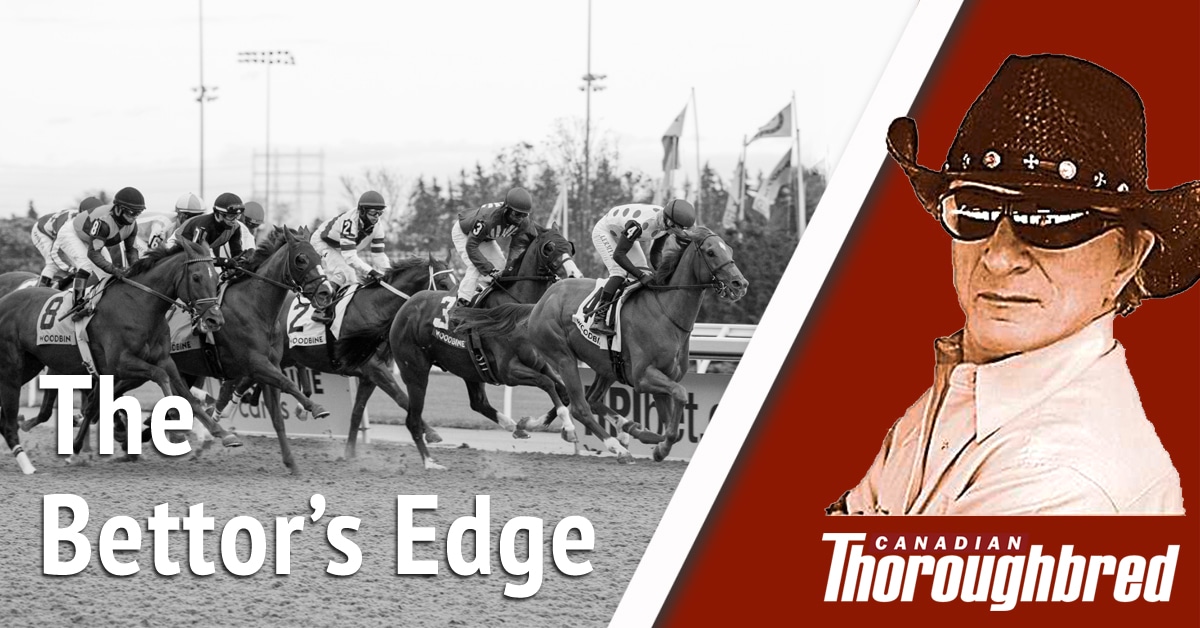You may recall superfectas being introduced to our wagering menus in the early 2000s and I, like many other players, dabbled in the new bet but without much success.
Then one Saturday, this happened: I was in the Race Book at my home track of Assiniboia Downs and was having a terrible day betting simulcast races from various tracks. I was down about $1,000 and had less than $200 left so I decided to throw caution to the wind and box five horses in a $1 superfecta box costing $120 at the now-defunct Stampede Park. All I looked at was the Equibase program, boxing the horses with the highest speed figures. Then I pretty much ignored the race. When I got around to looking at the result, I couldn’t believe my eyes. I thought there was a mistake. My $1 superfecta paid more than $9,000. In fact, it was the entire pool.
How could this be, I wondered. So I looked back at the odds of my five horses and noticed that one of the horses in my box was an extreme favourite at odds of about 3-5 – and that horse wasn’t among the top four finishers. So probably everybody else’s superfecta wagers included the 3-5 horse but I also had the correct four finishers on my ticket.
Wow! What an amazing rebound from a frustrating losing day. And, at that moment, I became a superfecta aficionado and in the days that followed I began betting superfectas at Lone Star, I recall, and other tracks and doing well at it. I bet big money to collect even bigger money. And that devotion has continued to this day. I don’t know anyone who specializes in superfectas as intently as I do.
Back in the early days, I knew of no one who took down one entire superfecta pool, let alone four of them as I did that paid in the $20,000 range—three at Woodbine and one at Fort Erie on Canada Day. Now, of course, superfecta bets have been reduced to 20 cents and you rarely see anyone catching an entire pool for 20 cents. But the 20-cent bet has other advantages. You can take “flyers” that you wouldn’t take if the cost were $1 a combination.
An example of a flyer is wheeling “all” horses on top of a superfecta with the favourite and second-favourite second and third, with “all” in the fourth position. The bet costs only a few bucks and if a longshot wins, the payoff is in the hundreds. There are many other permutations of this.
I find it easier—and more predictable—to win big money in a superfecta than in a horizontal pick pool such as a pick-4, pick-5 or pick-6. For one thing, you don’t have control over pick pools; you have to deal with race conditions you don’t particularly like and the odds of the winning horse could be anything. If favourites win all legs of a pick-4 or pick-5, you’re usually collecting less—sometimes much less—than the cost of the wager.
My favourite superfecta wager is boxing five or six horses in maiden races. Three of the four superfecta pools I won in the early 2000’s were maiden races. Two were won with a $360 box of six horses; and the other came from wheeling four horses with four horses with four horses with “all” at a cost of $194—and getting lucky when the third-place finisher was set down to fourth in a disqualification. I think I was so successful at winning entire pools because few players would be willing to shell out $360 for a box. Today, of course, the cost is one-fifth of that.
The $20,000 Fort Erie win resulted from spending about $144 for a wheel that required understanding race conditions. And, on a holiday such as Canada Day, how many casual players read or understand race conditions?
In maiden races, I simply box horses with the lowest added-up numbers, as per a rule I’ve mentioned before in this column. For each horse in the race, you add the finish position in the last race with the first call of the horse’s previous race. You can do this in seconds, I recall winning $3,800 in a 20-cent superfecta at Belmont by adding up numbers as the horses were loading in the gate, and rushing to the mutuel seller to lay down $72 to box the six lowest added-up numbers.
My favourite superfecta wheel for other conditions looks like this: three horses with three horses with “key” with “all” and three horses with three horses with “all” with “key.” A horse I especially love for the third and fourth position is a horse that is cutting back to a sprint after showing early speed in a route race. Speaking of which, such an angle was my best bet this past Saturday on Woodbine’s card. In race 4, #1 Bridge to Nowhere had shown blazing early speed (118 pace figure) in her previous route race. True to form, she saved that early pace for a late move in the six-furlong sprint and finished fourth at odds of 19-1, completing a $1 superfecta that paid $226 when the three obvious horses finished one-two-three. The result was 4-7-10-1.
I’ve never made a guarantee in this column but I guarantee you’ll make money with this angle and the payoff will generally be generous because the horse cutting back to a sprint will usually be a longshot.
Okay, now that another live racing season at Woodbine is in the history books, let’s move on to other tracks using the same racing “rules” and let’s enjoy the countdown to the Kentucky Derby with almost weekly prep stakes races for three-year-olds. And remember that patience is your best friend when making betting decisions.
Best of the holiday season and may the horse be with you!


